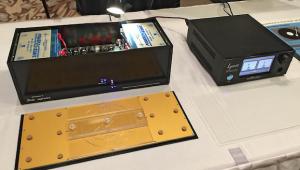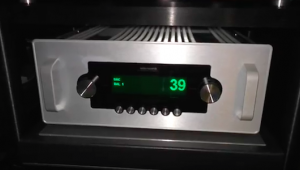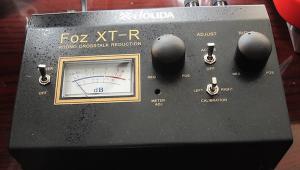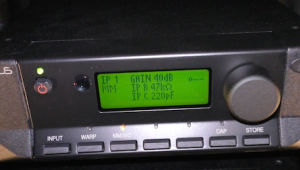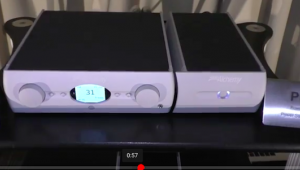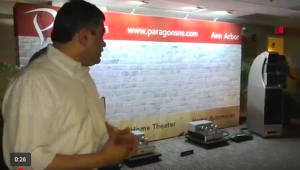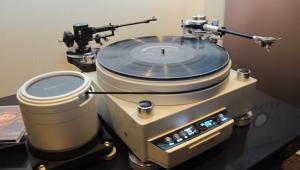AXPONA 2016 Opens Strong
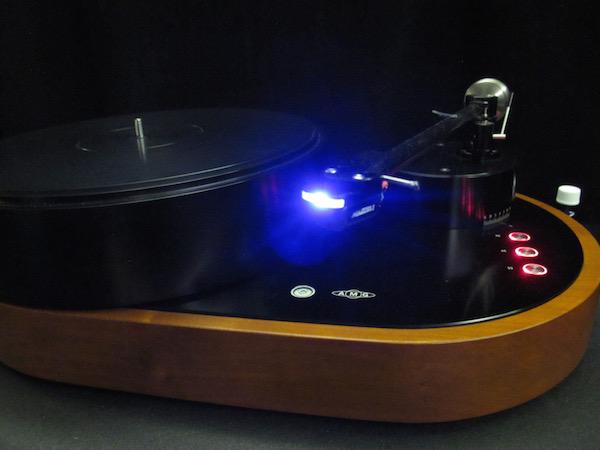
A.J. is standing with some customers and with his importer who had agreed per Stereophile policy, to reimburse me at the show for return shipping costs of a van den Hul cartridge I’d just finished reviewing, and then changed his mind and mailed a check.
“Thank you for the very nice review of the Crimson cartridge” A.J. said (review published soon in Stereophile). Without missing a beat the importer chimes in “Did you get the check?” How do you think that sounded to the assembled? I provided an immediate reputation saving clarification!
AXPONA 2016, still an upstart audio show, was bigger and even better attended than was last year’s show. Unlike at previous New York shows, local dealer support at AXPONA was strong. Despite the gorgeous 70 degree Chicago weather, attendance all three days was high with continuously crowded hallways and rooms throughout the three days.
Some shows have throngs day one or two and clear out for the rest of the time, or there are waves of people in the morning and desolation later. This show saw a steady stream of visitors from morning until closing.
More importantly, the attendees seemed to be appreciative buyers and enthusiasts rather than cynical parts cost calculating “tire-kickers”, who understand the system: manufacturers sell products at wholesale to dealers. Dealers resell them, (hopefully at a profit) to consumers, adding value with expert advice, installation skills and service.
I am often amazed by how many consumers think manufacturers “lend” dealers equipment to display and when one is purchased, the dealer then buys and resells it.
In fact, retailers have to make a substantial investment in inventory. The risks can be enormous if they guess wrong about what will happen in the marketplace over the next year. When you visit a store and see a room full of expensive loudspeakers, know they were bought by the retailers, not lent by the manufacturer for display!.
Trending
Music sources at AXPONA 2016 in most ways mirrored what’s been reported in the mainstream press: CDs were hard to find and vinyl was everywhere. On the digital side iPad controlled, server-based high-resolution sources were the most common. Only a few rooms streamed audio and those rooms used CD resolution Tidal.
There was a major uptick in the number of reel-to-reel tape recorders in use at the show, some of which spooled legitimate source material and some of which unrolled sonic stairways to hell. While there’s chicanery in the vinyl reissue business, in my opinion there’s more in reel-to-reel tape.
In the Magico room, Jonathan Horwich played an analog tape he’d recorded of Chick Corea and it sounded superb through a pair of Magico S 5 MkII speakers but so did Ferit Odman’s AAA LP played on a top of the line Kronos turntable.
I found reel-to-reel decks in the /Joseph Audio/Jeff Rowland/Cardas Audio/VPI Industries room (a ½” ATR), and in Paragon Sound’s room, which featured the audio show debut of Wilson Audio Specialties new $100,000 Alexx loudspeakers driven by Doshi Audio tube-based electronics that included custom Doshi tape circuitry replacing the Studer’s. DCS Ltd. demoed in the Paragon room its newly upgraded and enhanced Vivaldi DSD-based 4 box DAC.
There may have been a few other rooms using reel-to-reel tape but I missed them. Myles Astor ran a seminar about reel-to-reel tape, which he called, hopefully tongue-in-cheek, “The Format of the Future”.
In the video embedded below you’ll see what’s new at Jeff Catalano’s Highwater Sound, which was directly across from my hotel room. The Audio Frontiers Stradavari Phono Stage shown in the video costs $11,500. The amps in the video cost $12,500.
From there, before going to breakfast, I visited the waveion room, which had to be among the weirdest. The folks in the room, who are from the Ukraine, claim to have a new technology to produce sound “without physical boundaries” without using any kind of membrande (ie: driver).
Instead “…an invisible pulsating shaft of air generates a 360 degree sound field (with) molecules turned into negative and positive ions, generating powerful, realistic output.”
What I heard in the room was 100% unimpressive. It was as you will hear in the video: very low in level and sounding like an old transistor radio, but if any sound at all was created this way, it is impressive enough. Sort of.
The second video was in interview conducted by Cool Cleveland’s Tom Mulready in The Marketplace area of the show.
